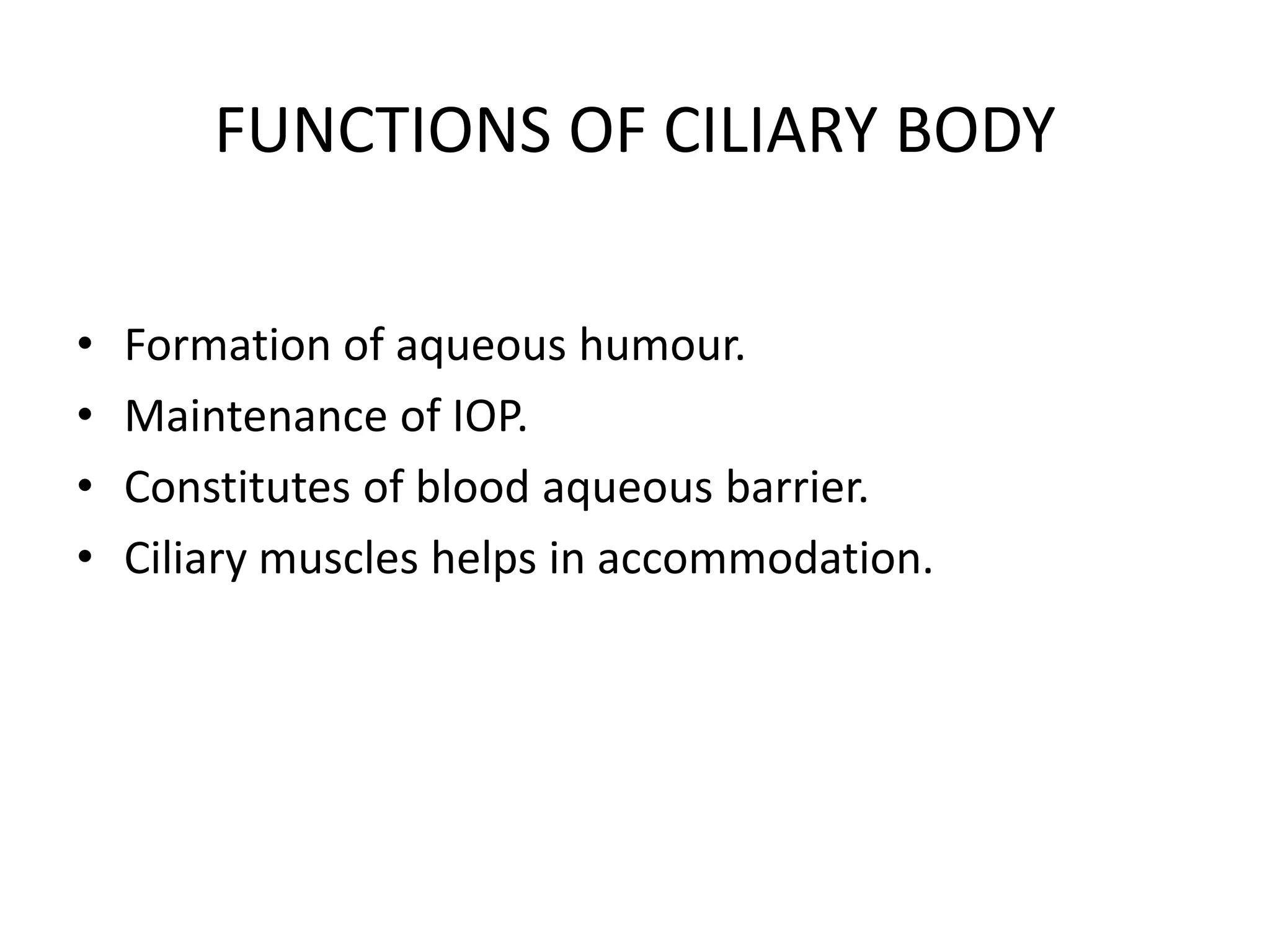The uveal tract consists of the iris, ciliary body, and choroid. The iris controls the size of the pupil and determines eye color. The ciliary body produces aqueous humor and contains muscles that help with accommodation. It is composed of ciliary processes containing blood vessels that secrete aqueous humor. The choroid provides nutrients to the outer retina and contains numerous blood vessels in three layers. The uveal tract supplies nutrition to the eye and helps regulate intraocular pressure.



















